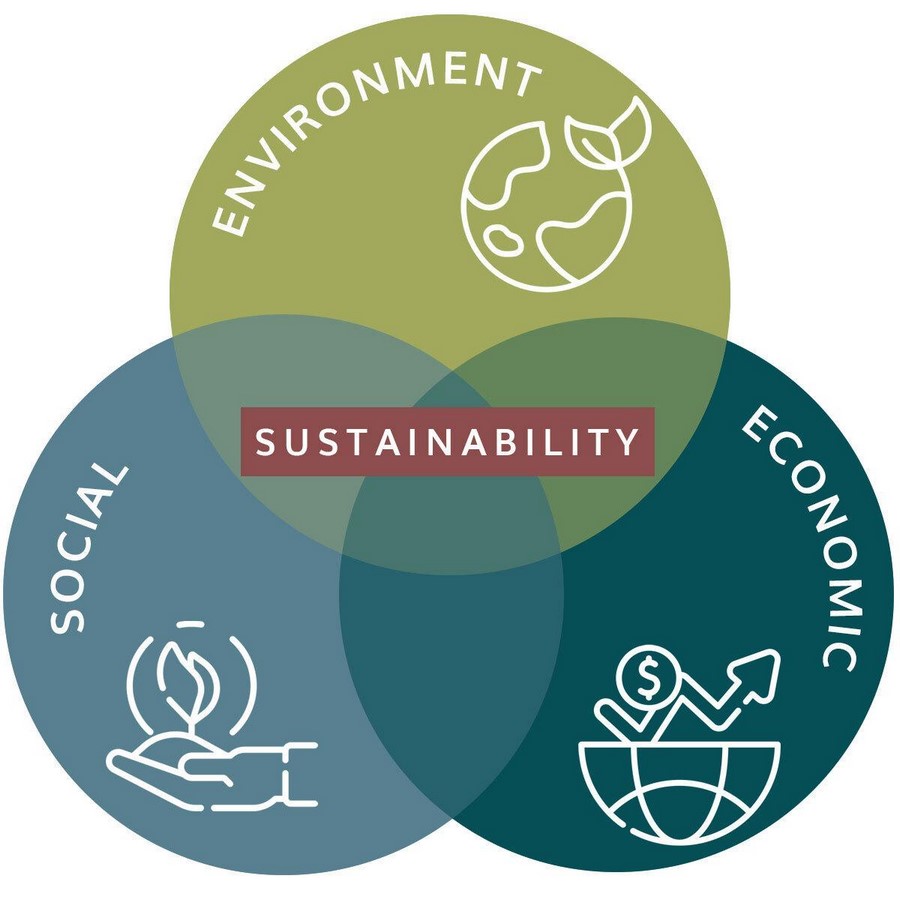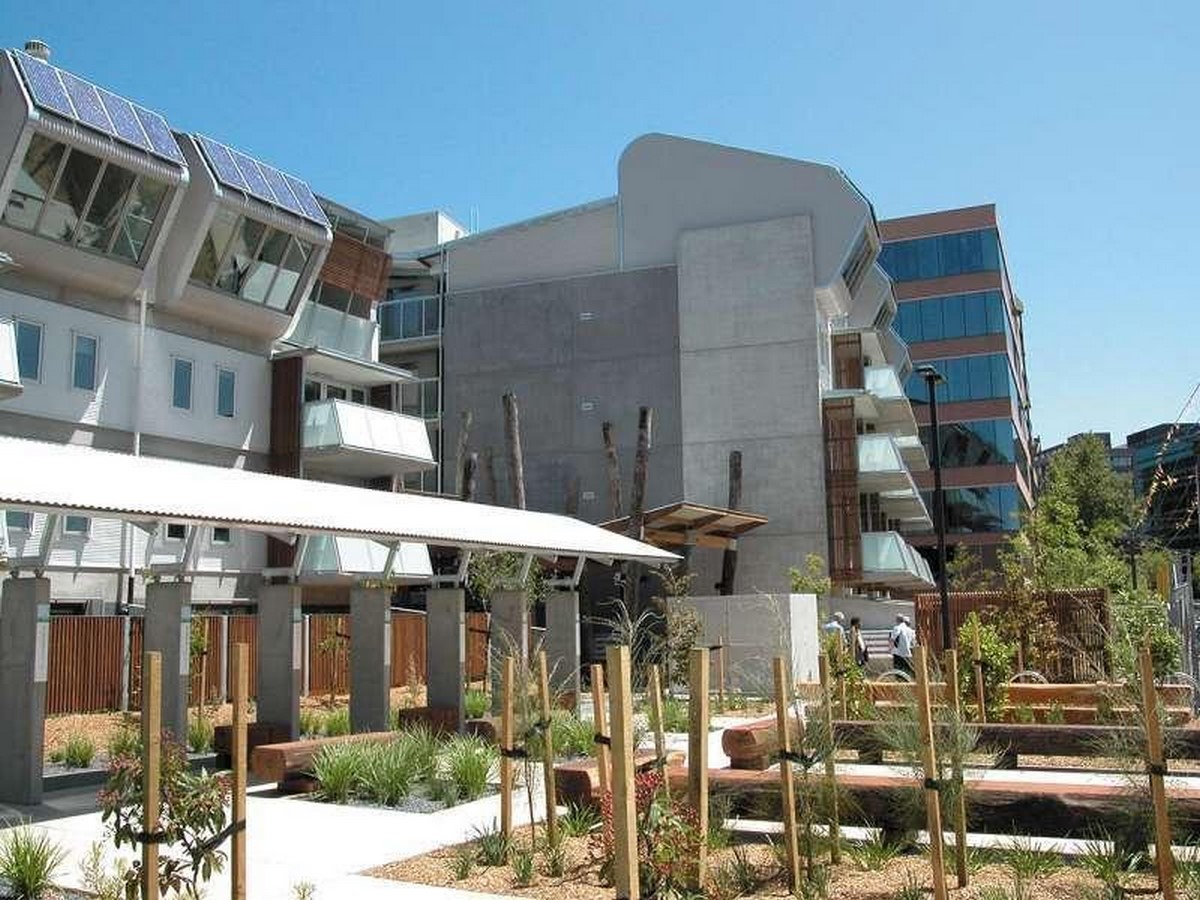What is Sustainability?
The ability to meet the needs of today without placing the future at risk is known as sustainability. It is the process of finding an equilibrium in the economic, environmental, and social well-being of the society. Using sustainable practices will help preserve the planet and businesses in the long term (Tiwari, 2023).

What is Sustainable Architecture?
A sustainable practice allows the creation of buildings with very little influence on the environment. At the same time, a sustainable design takes care of the building occupants’ health and safety. Thus minimizing the down-hill effects of the construction industry on the environment. It is high time that the construction industry takes environmental-friendly measures. Since it’s the industry that has always been the reason for high energy levels and material consumption. A more sustainable approach to the construction industry will help the environment to be better and safer for the coming generations. The textile industry is also closely associated with high energy consumption therefore both industries need to take steps that will better the future (FibreGuard, 2021).
The architectural field needs to take initiatives at every step involving construction to be more environmentally friendly. Green technologies are being implemented in new projects to achieve less carbon emissions. With the help of renewable energy resources and the use of recycled materials in buildings can help achieve the goal of green technology. Architects have always been responsible for healthy designs which means designing a building that takes care of occupants’ health as well as has less impact on the environment. A careful inspection of materials can help architects build houses that reduce the energy consumption and resources used in construction (FibreGuard, 2021). Greenery involved with construction can reduce carbon emissions into the environment. This is one of the few initiatives that is being used in different countries by various architectural firms.
There are several examples of sustainable architecture around the world. One such example is the K2 apartments in Australia. The apartments use up to 55 percent less electricity and 46 percent less gas with cutting water wastage to 53 percent (Blog, 2023).

How can Sustainable Architecture help better the future?
Sustainable designs can help reduce carbon emissions into the environment. It efficiently uses materials and reduces energy consumption. Thus helping lessen the negative impact on the environment. Building practices that are sustainable decrease the negative aspects of the construction industry by protecting the existing environment. There are several ways to protect the environment with the most useful and easier way of planting trees, use of greenery on site, and use of sustainable materials. A common principle used by architects to do so is applying passive house solutions to building designs (FibreGuard, 2021).
Sustainable architecture involves limiting energy use, which ultimately reduces waste production. This can be achieved by incorporating solar energy, using efficient water and heating systems, and utilizing renewable materials. These resources are infinite, and proper harnessing of them can benefit both the future and the planet. This approach is forward-looking and can help to ensure a better future for everyone (FibreGuard, 2021).

Lastly, the most important aspect of a sustainable design is the occupancy’s health. A dweller’s health is greatly affected by the place they dwell in. Better air and water quality promotes better living. Occupants of a healthy house tend to be healthier. Being surrounded by natural, sustainable materials has the advantage of improving the overall health of the occupants. Sustainable architecture also helps in advancing solutions that help to increase the life of buildings while reducing energy consumption and low emissions of carbon footprint into the environment (FibreGuard, 2021).
Sustainable Architecture leads to Sustainable Business
Lighting plays a crucial role in the house. Apart from water and other energy costs, lighting can and should be reduced too. This can be done using smart technologies and/or different equipment. Changing to energy efficient lights which can be controlled by the users depending on their presence. This helps reduce costs in the long term. Regular maintenance of fixtures can help prevent unnecessary leakage thus reducing energy consumption. The use of reusable resources can reduce monthly or annual billing. Recycling fixtures can also help to an extent such as saving on supply costs (Lagas, 2019).
Using and promoting green and sustainable practices can help firms or companies become unique. At the same time, it will become a means to raise awareness and take part in building a sustainable future. Companies can attract consumers who are more aware of the environment-friendly materials or equipment leading to a more sustainable architectural practice. Companies can use recycled materials and sell them to consumers leading to an eco-friendly circle of business. Nowadays, with the help of social media, the technologies can become a trend and more awareness can be raised, leading to increased sales. Many governments including the U.S. government have policies in tax incentives on companies that use green solutions. They have made it easier for them to import and export materials (Lagas, 2019).
A sustainable approach also allows to boost the morale of the current generation to increase their practice in this field. Collaborative efforts of employees can bring about a big change in the business. Attempts to create and implement green solutions in work should be appreciated and encouraged. With continuous experiments and teamwork, innovations are bound to happen. Challenging engineers to cut down material usage or resource usage can help create sustainable manufacturing processes. This eventually helps the company in creating a good economy. Creating projects that have less carbon footprint can help companies stand out. This will create a much safer environment for future generations. The use of a more sustainable approach will allow future generations to benefit from improved water and air quality (Lagas, 2019).
References:
- Eco-friendly architecture: The Importance of Sustainable Design (no date) FibreGuard. Available at: https://fibreguard.com/blog/eco-friendly-architecture-sustainable-design (Accessed: 14 September 2023).
- Tiwari, D.S. (2023) The business case for sustainability: How to make a profit while doing good, LinkedIn. Available at: https://www.linkedin.com/pulse/business-case-sustainability-how-make-profit-while-daya/ (Accessed: 15 September 2023).
- Lagas, B. (2019) Five benefits of embracing sustainability and green manufacturing, NIST. Available at: https://www.nist.gov/blogs/manufacturing-innovation-blog/five-benefits-embracing-sustainability-and-green-manufacturing (Accessed: 17 September 2023).
- Blog, H. (2023) Sustainable architecture: 4 amazing examples of Green Buildings, her. Available at: https://blog.herzing.ca/sustainable-architecture-4-amazing-examples-of-green-buildings#:~:text=Some%20of%20the%20key%20components,friendly%20methods%20of%20waste%20management (Accessed: 17 September 2023).
- K2 Sustainable Housing Project (2019) Aquacell. Available at: https://aquacell.com.au/case-studies/k2-sustainable-housing-project/ (Accessed: 17 September 2023).
- Sustainability and the EYLF (2023) Environmental Education in Early Childhood. Available at: https://www.eeec.org.au/sustainability-and-the-eylf/ (Accessed: 17 September 2023).
- Bamboo architectural designs that prove why this material is the future of modern and sustainable architecture! – yanko design (2021) Yanko Design – Modern Industrial Design News. Available at: https://www.yankodesign.com/2021/04/24/bamboo-architectural-designs-that-prove-why-this-material-is-the-future-of-modern-and-sustainable-architecture/ (Accessed: 17 September 2023).














